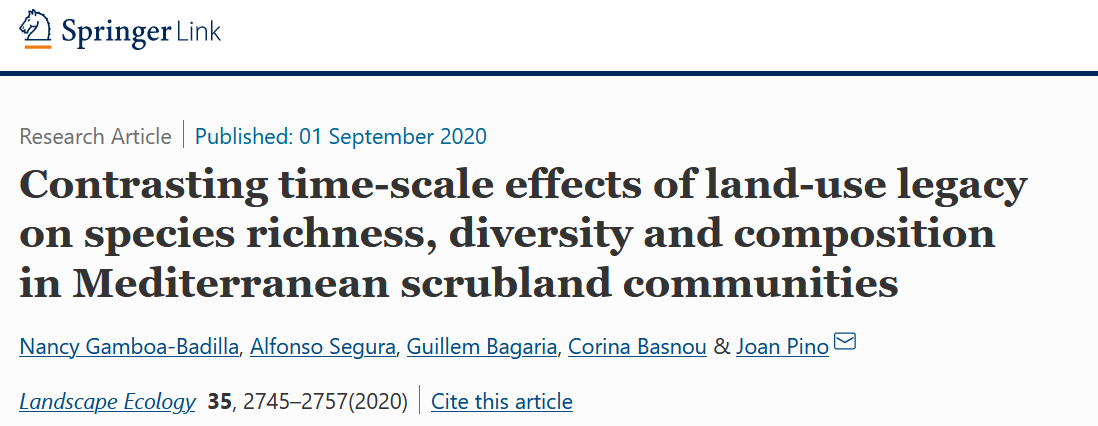Gamboa-Badilla, N.; Segura, A.; Bagaria, G. et al. 2020. “Contrasting time-scale effects of land-use legacy on species richness, diversity and composition in Mediterranean scrubland communities”. Landscape Ecology 35: 2745–2757.
Abstract
Context
It is known that land-use and land-cover (LULC) changes affect plant community assembly for decades. However, both the short- and the long-term effects of contrasting LULC change pathways on this assembly are seldom explored.
Objectives
To assess how LULC change pathways affect woody plant community parameters (i.e. species richness, diversity and evenness) and species’ presence and abundance, compared with environmental factors and neutral processes.
Methods
The study was performed in Mediterranean limestone scrublands in NE Spain. Cover of each woody species was recorded in 150 scrubland plots belonging to five LULC change pathways along the past century, identified using land-cover maps and fieldwork. For each plot, total woody and herbaceous vegetation cover, local environmental variables and geographical position were recorded. Effects of these pathways and factors on plant community parameters and on species presence and abundance were assessed, considering spatial effects potentially associated to neutral processes.
Results
Species richness and diversity were associated with LULC change pathways and elevation, while evenness was only associated with this last. Pathways and environmental variables explained similar variance in both species’ presence and cover. In general, while community parameters were affected by recent-past (1956) use, species presence and abundance were associated with far-past (pre-1900) cropping. No relevant spatial effect was detected for any studied factor.
Conclusions
Historical LULC changes and current environmental factors drive local-scale community assembly in Mediterranean scrublands to an equal extent, while contrasting time-scale effects are found at community and species level. Neutral, dispersal-based processes are found to be non-relevant.

